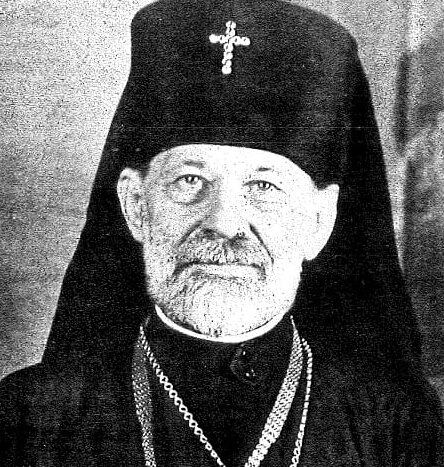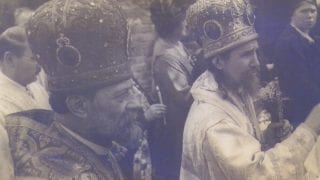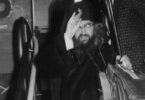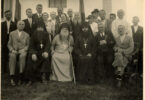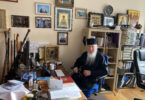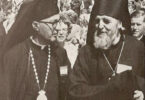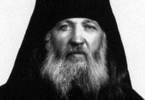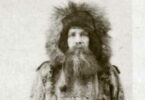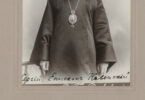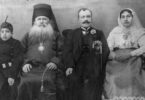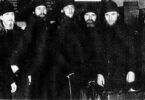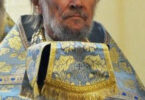Introduction
“When a Bishop of the Russian Orthodox Church was deposited some months ago, screaming and kicking, on a Manhattan sidewalk, the police and the public had reason to know that holiness and tranquility had, for the time being, parted company. The Bishop was John S. Kedrovsky [Renovationist ‘Bishop’]. He had asserted that he was the Archbishop of his church in North America, and hence presiding prelate of the Cathedral of St. Nicholas, Manhattan. He had with him papers from Russia to prove it. It was an effort to make clear his position to Platon, the temporary Archbishop, that he had suffered his humiliating contact with the asphalt. Archbishop Platon had simply clapped his hands and shouted in Russian: ‘Throw him out!’ The disgruntled Kedrovsky, a naturalized U.S. citizen, at once filed suit against Archbishop Platon. Thus began an interminable, ludicrous, and involved dispute.
Because Bishop Kedrovsky derived his authority from the Soviet government, Bishop William T. Manning [1866-1949, Bishop of New York of the Protestant Episcopal Church] called loudly upon Christian Churches to support Platon, the anti-Bolshevik. A new claimant arose in one Adam Phillipovsky, a big, bearded man with a voice that could make the windows of a church or a police-court shiver. He entered suit to obtain the Cathedral and all that went with it. Convinced that by this piece of deference to the curious laws of a quaint country, all that he wanted had automatically accrued to him, he enlisted a Bomb Squad from the Manhattan Police Department, stormed the Cathedral, ousted Platon much as that prelate had previously ousted Kedrovsky. Thereupon, Platon’s adherents had produced whatever axes they had to grind, attacked by night, chopped their way into Bishop Adam’s residence, reinstated their leader. Justice Levy of Manhattan threw Bishop Adam into jail for contempt of court.
Meanwhile John S. Kedrovsky was living quietly in Hartford, Conn., and his suit was filtering slowly through the wadded files of legal red tape. Last week it trickled into the attention of the New York Appellate Court, which declared that there was no doubt of his authorization by the Russian Holy Synod. Accordingly, the court reinstated him and declared that the claims of the bellowing Bishop Adam, Plaintiff Platon, and all other Russian-American Archbishops, were null and void. Said Kedrovsky’s lawyer: ‘For the first time in a history of more than a century, the American diocese of the Russian Church is headed by an American citizen. Metropolitan John Kedrovsky’s interests are wholly American …’
‘Hamba,’ shouted one and ‘Hamba’ cried another-which being translated from the Russian means ‘Shame.’ A foreign mob pressed in from the East one rainy day last week, tossed cattle wise upon 97th St., Manhattan, sprawled upon the upper calm of Fifth Avenue by the Park. ‘Hamba. Hamba.’
The mob converged upon a small, ill favored church in the centre of the block flanked by apartment buildings-St. Nicholas Cathedral, the mother church of all Russian Orthodox faithful in North America, which faintly reflects the Slavic splendor by its six cupolas above, and by ugly ikons and a seatless rotunda within.
Presently a taxi drove through the mob. Out sprang two officers of the law, ran up the Cathedral steps, pounded. A woman thrust her head from an upper casement, shrilled, withdrew. The mob laughed, having often during the past month seen the woman in the Bishop’s house. A moment later the Cathedral doors swung open, and into the rain stepped a padded figure. A strange black hat was on its head. Black whiskers covered its face, and skirts the rest. Those near the sacred steps saw the figure accept papers from the law officers, pretend to read them, then mutter: ‘I, Bishop Adam Phillipovsky, am found guilty of contempt of court, I shall go with you.’ Without further ceremony, the startling figure was whisked off to the Ludlow Street Prison to serve a 30-day sentence.
From the mob emerged three well-dressed lawyers, hastened up the steps of the episcopal home, found the door stoutly barred, became enraged. They pounded. The woman shrieked again. They battered the oak, crawled through, rushed to the stairs where they found five-year-old Oleg Chervinsky howling faithfully. Bishop Adam had left his secretary, the Rev. Michael Chervinsky, pretty little Mrs. Chervinsky and Oleg to hold the fort against all comers. The Rev. and Mrs. Chervinsky were upstairs whither the lawyers, joined by the special police, quickly followed. Battering through more oak, they found the Rev. Secretary and his wife, ‘I’m sick,’ said Mrs. Chervinsky from the bed, ‘go away.’ ‘We’ll get an ambulance,’ said the detective. Instantly she threw back the bed-covers, jumped forth full clad. ‘Go away,’ she said, ‘or I’ll undress,’ and with feverish speed she began to do so. ‘Listen, lady, we’ll wrap you up in a blanket and carry you out.’ The disrobing ceased. Soon the Rev. and Mrs. Chervinsky, and the faithful howler Oleg were departing by taxi into obscurity.
A minute later, a lawyer was telephoning to Brooklyn. An hour later, Archbishop Platon Rodzestvensky [sic] had reentered his home and his Cathedral. It had been just about a month since Archbishop Platon had been driven into ecclesiastical exile. The affairs of the Russian Church in North American continent have habitually been in the law courts. New York City judges of many different threads and racial extractions have had to decide between this and that claimant to the archiepiscopal title and, by corollary, to the vast properties of the Church in this continent.
The Soviet Revolution, and the resultant confusion of the Russian Church, some 5,000 miles away, added to the dispute. Since the War, Archbishop Platon has been in actual possession of the American branch of the Russian Church, but he has been hostile to the new regime in Russia, and did not follow the Patriarch Tikhon when that lately deceased ruler compromised with the new Church faction in Russia. Patriarch Tikhon had summoned him to Moscow to be unfrocked. Thus Platon may be generally identified with the aristocratically inclined ‘unreconstructed Russian.’
Upon what authority Bishop Adam urged his claim to the Archbishopric is not well understood. While disclaiming Bolshevik sympathies, he, a Galician, evidently represents a Pan-Slavonic party, as opposed to a 100% Russian party. At any rate, he entered suit to obtain the Cathedral and all that went with it. Receiving a preliminary judgment in his favor, Bishop Adam and his lawyer obtained the assistance of a police bomb squad early in July, attacked Platon, drove him forth. But they overlooked the fact that the judge had granted a stay of judgment to hear Platon’s argument; hence their ouster was illegal. Every Sunday in July was marked by rows and rowdyism within and without the Cathedral. In vain did the Rev. Michael Chervinsky preach. Jeers, hoots, screams from the standing congregation confounded his words. In vain did Bishop Adam defy the courts. Proudly he went to jail. Proudly Platon returned to the dim Cathedral under the protecting shadow of the law.” [1]Time Magazine, 1925
http://www.time.com/time/magazine/article/0,9171,721495,00.html
http://www.time.com/time/magazine/article/0,9171,720713-1,00.html
Adam Apollinarievich Phillipovsky-Philipenko was born on 30 January 1881, the the village of Ruda, Zhidachevsky district, in Eastern Galcia, at that time, part of the Austro-Hungarian Empire. His father was an Orthodox Priest. The Zhidachev district, along with all ‘Red Ruthenia’ (Southeastern Poland, Western Ukraine), was incorporated into Poland in the 14th century, and taken by the Austro-Hungarian Empire in 1772, with the First Partition of Poland. It remained part of Austria-Hungary until 1918. His forbears came from what was later the Ekaterinoslav Province (former lands of the Zaporozhian Cossacks) and his mother was descended from the Zaporozhian Hetman Peter Konashevich. The future Bishop Adam finished Berezhany (a nearby town) Elementary School, subsequently graduating from the Berezhany Gymnasium (High School) in 1900. While a student at the Gymnasium, he was involved in a secret society for the study of Russian literature and history, considered illegal by the Austro-Hungarian government. The same year, he began studies at the Theological Faculty of the Lviv University, and ‘moved on to law school.’ In 1903, he travelled to North America, where he became involved with Carpatho-Russian emigres, wrote an article for the Russian newspaper, ‘Pravda,’ and soon became its editor. He sang in the the Bishop’s choir, and met with then Bishop Tikhon (Bellavin, +1925, later patriarch and Holy New Confessor of Russia) of the Aleutians and North America, Archpriest Alexander Hotovitzky (later New Martyr, +1937), and Priest Alexander Nemolovksy (+1960, later head of the North American diocese, and Metropolitan of Brussels and Belgium for the Moscow Patriarchate); under their influence, he decided to serve the Church. In 1905, he returned home to finish his education at Lviv University. Graduating in 1912, he then returned to the United States. [2]http://www.tez-rus.net/ViewGood42062.html
On 14 September 1912, Adam Phillipovsky was ordained as a deacon by Bishop Alexander (Nemolovsky); on 17 September, Bishop Alexander ordained him to the priesthood. The newly ordained Father Adam was assigned to St Michael’s church in Philadelphia, continuing his pastoral labors in Newark, New Jersey, and later, in New York. In 1914, he was appointed as Rector of the Church of the Resurrection in New York. At the same time, he taught at the St. Platon’s Orthodox Seminary in Tenafly, New Jersey, sat on the Education Committee of the Diocese, edited the church newspaper ‘Svit’ (‘Light’), and acted as secretary for the ‘Adherents to Orthodoxy’ society. [3]ibid.
In 1916, Archbishop Evdokim (Meshchersky, later Renovatonist ‘Metropolitan’ of Odessa, +1935) of the Aleutians and North America assigned Father Adam Philippovsky as Dean of the Orthodox parishes in Canada. He assisted Bishop Alexander (Nemolovsky) of Canada with mission work among the Carpatho-Russian Uniates, participating in debates with them. In 1917, he was appointed Rector of the Holy Trinity Cathedral in Winnipeg, tonsured into monasticism, and elevated to Archimandrite by Bishop Alexander. [4]op.cit. 2
On 05 August 1916, Archbishop Evdokim and Bishop Alexander consecrated Archimandrite Stephen (Dzubay, returned to the Unia in 1924, +1933) to the episcopate as Bishop of Pittsburgh and the Carpatho-Russians. Formerly the Vicar General of Uniate Greek Catholic Diocese in the US, an extremely popular and prestigious Uniate cleric, Bishop Stephen had only abandoned the Unia and joined the Russian Church in America on 30 July 1916. Bishop Stephen brought over more than twenty Uniate parishes to the Russian Diocese, and had been consecrated a Bishop to oversee the former Uniate parishes brought into the Diocese earlier. At the time, of the 200 parishes in the Diocese, 160 of those were former Uniate parishes. When Archbishop Evdokim departed to Russia for the All Russian Council in 1917, Bishop Alexander was appointed to administer the Diocese, and Bishop Stephen worked closely with him as a “senior auxiliary.’ [5]https://www.rocorstudies.org/church-people/lives-of-bishops/2010/12/27/bishop-stephen-dzubay-2/[/ref[ Because of financial and other concerns, the situation of the Diocese, and confidence in Bishop … Continue reading By the time Bishop Alexander withdrew, and Metropolitan Platon (Rozhdestvensky, +1934) was seeking control of the Diocese, Bishop Stephen was also ready to ‘declare as a candidate.’ Metropolitan Platon had ruled the diocese as Archbishop from 1907 to 1914, returning to America as a ‘visiting Bishop’ after having had to evacuate from Russia at the defeat of the White Army. Due to his close association with Bishop Alexander, and the fact that he ‘held sway’ over 80% of the parishes in the Diocese due to their Carpatho-Russian roots, Bishop Stephen felt that he should rule the Diocese. A first step was arranging the consecration of Archimandrite Adam (Philippovsky) as a Bishop. [6]op.cit., 5
The consecration of Archimandrite Adam as a Bishop was yet another source of great controversy. The story is told by another ‘interested observer,’ Archbishop Aftimios (Ofiesh, +1966), who had been consecrated to the episcopate on 13 May 1917 by Archbishop Evdokim and Bishop Alexander as Bishop of Brooklyn, to oversee the Arab parishes in the Diocese. [7]Ofiesh, Marian Namey, Archbishop Aftimios Ofiesh, (1880-1966) A Biography Revealing his Contribution to Orthodoxy and Christendom, Aftimios Abihider, Publisher, 2001, p. 65 Writing in 1927, Bishop Aftimios observed: “Previous to 1922 the Orthodox people in America from the Balkan and Slav districts of Europe were admittedly and officially under the direction of the Orthodox Jurisdiction in this country established and maintained by the Russian Archdiocese. In that year, under the invitation and auspices of the Protestant Episcopal Church and entirely unknown to the proper Orthodox Catholic Bishops and Authorities in America, Bishop Gorazd Pavlik [1979-1942, New Martyr of Prague, executed by the Nazis], a Roman Catholic Priest who had left the Roman obedience at the height of the nationalistic fervor to head a National Czecho-Slovak Church and had been consecrated Bishop by the Serbian Orthodox Patriarch, came to America. He was taken to the Protestant Episcopal General Convention by Messrs. Emhardt and Burgess, and during his stay in America was under the constant tutelage of their assistant, Mr. Robert Keating Smith, who as a paid staff worker of the Division of the Foreign-Born was assigned to guide and assist Bishop Gorazd in his travels and activity in America. As a result of this benevolent guidance, Bishop Gorazd did not consult with the Orthodox Catholic authorities exercising canonical jurisdiction over the Slavic and Balkan people in America. On the contrary, disregarding these entirely, he was persuaded to make a formal concordat with the National Council of the Protestat Episcopal Church and to turn over the newly organized Czecho-Slovak Orthodox Church to the Protestant Bishops and to the communion of the Episcopalians, on the ignorant and misinformed assumption that the dogmatic standards and foundation of the Protestant Episcopal Church was the same as the Orthodox. When this concordat was announced, the official organ of the Russian Archdiocese immediately condemned it in an article, declaring that if this new Czecho-Slovak Orthodox Church had the same dogmatic standards and foundation as the Protestant Episcopal, and found union and communion under Protestant Bishops possible, then certainly it was no part of the Orthodox Catholic Church and common of Faith.
But the deflection from Orthodox Catholic jurisdiction and sacramental communion on the part of the Czecho-Slovaks was not the only destruction that the Protestant Episcopal Church accomplished through Bishop Gorazd Pavlik. A small disorderly party of Russians were contesting the regular and accepted authority of the Russian Church Authority in America. While in this country under the shepherding of Messrs. Emhardt, Burgess, and Keating Smith, Bishop Gorazd joined with the schismatic and un-canonical faction and took part in an un-canonical consecration of Adam Philippovsky as a Bishop for the disgruntled faction of Carpatho-Russian and other minority groups … Adam Philippovsky himself has caused no end of trouble and dissension in the Orthodox Church since he was consecrated by this ally of the Protestant Episcopalians.” [8]Aftimios, Archbishop of Brooklyn “Present and Future of Orthodoxy in America in Relation to Other Bodies and to Orthodoxy Abroad,” in The Orthodox Catholic Review, Vol. I, Nos. IV-V, April-May … Continue reading
The consecration of Bishop Adam took place on 25 October 1922, concelebrated by Bishop Stephen (Dzubay) and Bishop Gorazd (Pavlik). On December 5 December 1922, “Bishop Stephen, together with Archimandrite Adam Filippovsky [the author not having recognized the consecration of Bishop Adam], Father Michael Ilyinsky, Father Peter Kochanir, Ivan Kedrovsky and other priests organized in Philadelphia a so-called ‘Council,’ where Bishop Stephen was pronounced to be Ruling Head of the [North American] Diocese. On 23 May, Bishop Stephen, in a letter to Metropolitan Platon, acknowledged his mistake and recognized Metropolitan Platon as Ruling Hierarch … at the end of 1924, he turned to Roman Catholicism.” [9](Afonsky), Bishop Gregory, A History of the Orthodox Church in America 1917-1934, Saint Herman’s Theological Press, Kodiak, Alaska, 1994 p. 43. Although sources are unclear, Bishop Adam apparently continued to serve Carpatho-Russian communities independently until 1930.
On 29 January/11 February 1930, the Synod of ROCOR accepted Bishop Adam (Philippovsky) into its jurisdiction, and named him as the First Vicar of the Diocese of North America and Canada, on the recommendation of Archbishop Apollinary (Koshevoi, +1933) of North America and Canada, with the title of ‘Bishop of Pittsburgh.’ [10]Opredelenie Arkhireiskago Sinoda Russkoi Pravoslavnoi Tserkvi Zagranitsei, 1930
“On May 14-17, 1936, a Council of Bishops of the Russian Orthodox Church in America was held in Pittsburgh. It issued the following encyclical letter to the faithful: ‘With great joy we inform you, beloved, that at our Bishops’ Sobor in Pittsburgh, the Temporary Statutes of the Russian Orthodox Church Abroad worked out in November 1935 by our hierarchs at the conference held under the presidency of His Holiness the Patriarch of Serbia, Kyr Varnava, was unanimously accepted by all of us, with the preservation of the existing autonomy.’
It continues, ‘All of our Archpastors, headed by their Metropolitan, enter into the make-up of the Bishops’ Council of the Russian Orthodox Church Abroad, which is the highest ecclesiastical organ for our whole Russian Orthodox Church Abroad, and which remains, at the same time, an inseparable part of the All-Russian Church.’
This encyclical letter was signed by Metropolitan Theophilus, Archbishops Adam, Tikhon, and Vitaly, and Bishops Arseny, Benjamin, Jerome, Leonty, and Makary – i.e., by all the bishops of the two jurisdictions.” [11]Holy Transfiguration Monastery, A History of the Russian Church Abroad, 1917-1971, p. 91
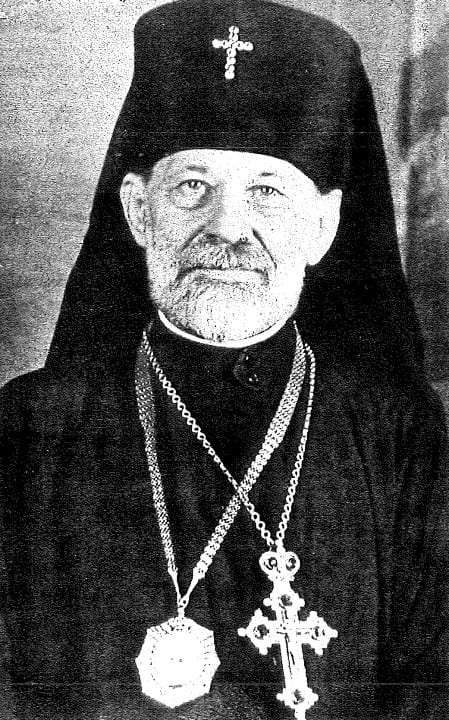 On 19 April 1936, with the blessing of Patriarch Alexander III of Antioch, Archimandrite Antony (Bashir, +1956) was consecrated to the episcopate as head of the Antiochian Archdiocese of North America. The consecration was led by Metropolitan Theodosius of Tyre and Sidon of the Patriarchate of Antioch (later Patriarch Theodosius VI of Antioch), concelebrating with Archbishop Vitaly (Maximenko, +1960) of the ROCOR’s North American Metropolitan District. Archbishop Vitaly had been given the blessing of both Metropolitan Anastassy (Gribanovsky,+1965), First Hierarch of ROCOR, and Metropolitan Theophilus (Pashkovsky), First Hierarch of ROCOR’s North America Metropolitan District to concelebrate the consecration. On the same day, “the disappointed candidate” for the post, Samuel David, was consecrated to the episcopate by three other Bishops of ROCOR’s North American Metropolitan District: Archbishop Adam (Philippovsky), Bishop Leonty (Turkevich), and Bishop Arseny (Chagovetz), “without any authority from the ecclesiastical authorities in Antioch, and without any formal permission from” ROCOR’s North American Metropolitan District. As a result, in 1938, Samuel David was excommunicated by the Patriarchate of Antioch (restored to communion in 1941). “Although the consecration of Archbishop Samuel by the Bishops of the Metropolia may have been an attempt to restore communion of Syrian parishes under the Metropolia, it instead formed a rival Antiochian jurisdiction.” [12]Surrency, Archimandrite Serafim, The Quest for Orthodox Church Unity in America, Saints Boris and Gleb Press, 1973, p. 110 -http://orthodoxcanada.ca/Metropolitan_Samuel_(David) Unsourced notes
On 19 April 1936, with the blessing of Patriarch Alexander III of Antioch, Archimandrite Antony (Bashir, +1956) was consecrated to the episcopate as head of the Antiochian Archdiocese of North America. The consecration was led by Metropolitan Theodosius of Tyre and Sidon of the Patriarchate of Antioch (later Patriarch Theodosius VI of Antioch), concelebrating with Archbishop Vitaly (Maximenko, +1960) of the ROCOR’s North American Metropolitan District. Archbishop Vitaly had been given the blessing of both Metropolitan Anastassy (Gribanovsky,+1965), First Hierarch of ROCOR, and Metropolitan Theophilus (Pashkovsky), First Hierarch of ROCOR’s North America Metropolitan District to concelebrate the consecration. On the same day, “the disappointed candidate” for the post, Samuel David, was consecrated to the episcopate by three other Bishops of ROCOR’s North American Metropolitan District: Archbishop Adam (Philippovsky), Bishop Leonty (Turkevich), and Bishop Arseny (Chagovetz), “without any authority from the ecclesiastical authorities in Antioch, and without any formal permission from” ROCOR’s North American Metropolitan District. As a result, in 1938, Samuel David was excommunicated by the Patriarchate of Antioch (restored to communion in 1941). “Although the consecration of Archbishop Samuel by the Bishops of the Metropolia may have been an attempt to restore communion of Syrian parishes under the Metropolia, it instead formed a rival Antiochian jurisdiction.” [12]Surrency, Archimandrite Serafim, The Quest for Orthodox Church Unity in America, Saints Boris and Gleb Press, 1973, p. 110 -http://orthodoxcanada.ca/Metropolitan_Samuel_(David) Unsourced notes
When Archbishop Adam “consecrated the Syrian Samuel David … with the consent of the Patriarch of Antioch, the Synod began church disciplinary proceedings against him. He was retired [1938], whereupon he claimed to be ‘the sole representative of the Russian Orthodox Church in the United States.’ In 1939 he entered into negotiations with Metropolitan Benjamin (Fedchenko), the representative of the Moscow Patriarchate [in the U.S.], and joined the Patriarchate. [13]Seide, Father Georg, History of the Russian Orthodox Church Outside Russia from its Beginning to the Present (1983), manuscript copy, Part IV, p. 9
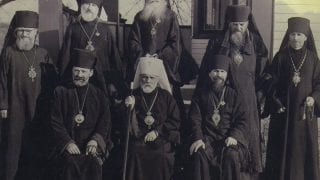
Hierarchs of North American Metropolitan. Left to right sitting: Archb Adam, Met. Theophil, Archb. Vitlay; Standing: Bps. Makary, Leonty, Tikhon, Arseny, Bishop. The late 1930s
In July of 1939, Archbishop Adam was defrocked by the Moscow Patriarchate for “insubordination.” In 1944, he petitioned Patriarch Sergius (Stragorodsky, +1944) for restoration as a Bishop, but was refused. Also in 1944, he made a personal request to the ‘Council of Bishops in the Americas’ [MP] and the Moscow Patriarchate restored him to the episcopate as an Archbishop, “for patriotic works in favor of the Soviet Union and the Mother Church.” In 1945, Archbishop Adam initiated a memorandum to the United Nations that ‘Holm, Lemko, and Carpatho-Rus’ be included within the borders of the Soviet Union. In May of 1946, the newly created People’s Church Committee of the North American Metropolia sent a telegram to Patriarch Alexei I (Simansky, +1970) of Moscow, informing him that they were planning to convene a People’s Church Congress in New York on 6 July 1946, to deliberate on the reunification of the Metropolia with the ‘Mother Church.’ They further informed Patriarch Alexei that no Bishops of the Metropolia would participate, only clergy and laity, and that, in the case of reunification, a new Archbishop would have to be appointed, because Metropolitan Benjamin (Fedchenko) and Archbishop Adam (Philippovsky) were “unacceptable to the Orthodox people in the United States.” [14]http://www.vocerkovlenie.ru/index.php/stranicwistorii/2911———iii.html Archbishop Adam visited the Soviet Union in 1946, and 1950. From August to October 1947, he administered the Moscow Patriarchate’s North American Diocese. In 1953 he was appointed as the Deputy Patriarchal Exarch in America. On 30 July 1954, at his own request, he was retired, with a pension. Archbishop Adam reposed on 29 April 1956 in Philadelphia. He was buried in the Mount Olivet Cemetery in Maspeth, Queens, New York. [15]http://ruschurchusa.org/ru/9/20/40/63 https://ru.wikipedia.org/wiki/Адам_(Филипповский)
References
| ↵1 | Time Magazine, 1925
http://www.time.com/time/magazine/article/0,9171,721495,00.html http://www.time.com/time/magazine/article/0,9171,720713-1,00.html |
|---|---|
| ↵2 | http://www.tez-rus.net/ViewGood42062.html |
| ↵3 | ibid. |
| ↵4 | op.cit. 2 |
| ↵5 | https://www.rocorstudies.org/church-people/lives-of-bishops/2010/12/27/bishop-stephen-dzubay-2/[/ref[
Because of financial and other concerns, the situation of the Diocese, and confidence in Bishop Alexander’s abilities to lead it, deteriorated quickly. [ref]see biographies of Bishop Antony (Dashkevich) and Bishop Alexei (Panteleev) @https://www.rocorstudies.org/church-people/lives-of-bishops |
| ↵6 | op.cit., 5 |
| ↵7 | Ofiesh, Marian Namey, Archbishop Aftimios Ofiesh, (1880-1966) A Biography Revealing his Contribution to Orthodoxy and Christendom, Aftimios Abihider, Publisher, 2001, p. 65 |
| ↵8 | Aftimios, Archbishop of Brooklyn “Present and Future of Orthodoxy in America in Relation to Other Bodies and to Orthodoxy Abroad,” in The Orthodox Catholic Review, Vol. I, Nos. IV-V, April-May 1927. online @: http://westernorthodoxy.org/pdf/writings1pdf |
| ↵9 | (Afonsky), Bishop Gregory, A History of the Orthodox Church in America 1917-1934, Saint Herman’s Theological Press, Kodiak, Alaska, 1994 p. 43. |
| ↵10 | Opredelenie Arkhireiskago Sinoda Russkoi Pravoslavnoi Tserkvi Zagranitsei, 1930 |
| ↵11 | Holy Transfiguration Monastery, A History of the Russian Church Abroad, 1917-1971, p. 91 |
| ↵12 | Surrency, Archimandrite Serafim, The Quest for Orthodox Church Unity in America, Saints Boris and Gleb Press, 1973, p. 110 -http://orthodoxcanada.ca/Metropolitan_Samuel_(David) Unsourced notes |
| ↵13 | Seide, Father Georg, History of the Russian Orthodox Church Outside Russia from its Beginning to the Present (1983), manuscript copy, Part IV, p. 9 |
| ↵14 | http://www.vocerkovlenie.ru/index.php/stranicwistorii/2911———iii.html |
| ↵15 | http://ruschurchusa.org/ru/9/20/40/63 https://ru.wikipedia.org/wiki/Адам_(Филипповский) |

